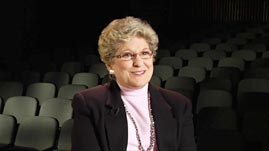Teachers' Domain - Digital Media for the Classroom and Professional Development
User: Preview

Source: Perkins Webcasts: "Teaching Braille Reading and Writing – Lucia Hasty"


Educator Lucia Hasty provides an overview of early literacy goals and objectives for working with children who are blind or visually impaired, in these videos produced by Perkins School for the Blind. Young children who are blind may not have the exposure to books and reading experiences that their classmates who are sighted have. Their exposure to braille may be even more limited. Hasty explains that overall expectations are the same as they are for all children, and notes specific needs for braille readers. These videos also address some of the common questions families and their support networks have about teaching braille to a child. Concepts like a child’s age, motor skills, reading style, education interests, and general education involvement are explored, with reference to research findings regarding these topics. Each video explores a particular area of the literacy curriculum.
Early Exposure to Books and Reading Experiences (Video)
The Significance of Concept and Oral language Development (Video)
Additional Skills Necessary for Braille Literacy (Video)
Maintaining Currency with Braille Codes (Video)
Conveying Information with Unique Braille Formats (Video)
Supporting the Classroom Teacher (Video)
Students who learn braille have the same learning needs as print readers, as well as additional needs to prepare for mastering braille. Children with visual impairments should have exposure to books and story time, just as their sighted peers do, and as much as possible, these books and stories should include exposure to braille. Educator Lucia Hasty suggests ways for laying a foundation for braille literacy by using tactile books and dual media. Children can follow along with their hands as they are read to, and discuss elements of the story and the illustrations that accompany it. This time spent reading gives value to books and the printed word, and presents braille as the preferred medium for reading and writing.
 Loading Standards
Loading Standards